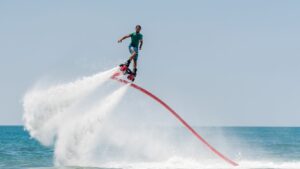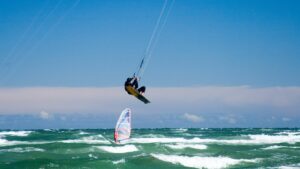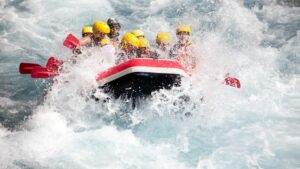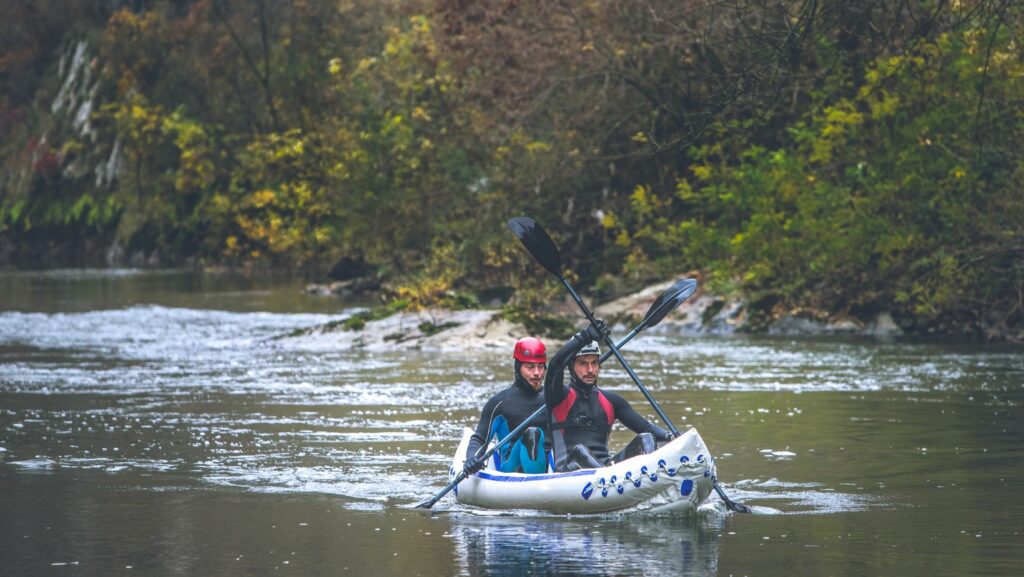Thrill-seekers and water lovers, unite! It’s time to dive into the exhilarating world of water board sports. Whether you’re a seasoned athlete looking to spice up your routine, or a newbie curious about the adrenaline rush these sports promise, this article is your gateway to a splashy adventure.
Water board sports are not just about the thrill; they’re also a fantastic way to stay fit and healthy. From surfing to paddleboarding, these sports offer a unique blend of excitement and exercise. So, ready to make a splash? Let’s navigate through the waves together and explore the exciting realm of water board sports.
Water Board Sports
 Venturing into the origins of water board sports propels us back to the ancient Polynesian cultures. They used boards carved from wood, riding waves for both recreation and as a practical means of fishing. Evidence reveals, however, that surfboarding, a cardinal water board sport, originated in Hawaii around the 15th century.
Venturing into the origins of water board sports propels us back to the ancient Polynesian cultures. They used boards carved from wood, riding waves for both recreation and as a practical means of fishing. Evidence reveals, however, that surfboarding, a cardinal water board sport, originated in Hawaii around the 15th century.
Examining key developments in water board sports unearths interesting transformations. Foremost, in the late 19th century, the sport expanded beyond Hawaii, gaining roots in California and Australia.
One pivotal development, occurring in the 20th century, involved the transition from wooden boards to lighter, more nimble synthetic materials. This innovation, driven by the surf industry, subsequently propelled the popularity of these sports, leading to the emergence of other water board sports, such as kiteboarding and stand-up paddleboarding.
The advent of compact, lightweight cameras has also revolutionized water board sports. Capturing jaw-dropping aerial footage further energizes enthusiasts and encourages beginners, contributing significantly to the surge in popularity of these sports during recent years.
Popular Water Board Sports Today
 Following a comprehensive dive into the riveting evolution of water board sports, let’s take a peek into the most popular forms these sports take today.
Following a comprehensive dive into the riveting evolution of water board sports, let’s take a peek into the most popular forms these sports take today.
Surfing, undoubtedly, reigns as a leading water board sport. Originating from Polynesian cultures and cemented in Hawaii, the sport has persistently developed. Modern surfing boasts advanced board designs and materials, enhancing rider performance. Also, compact cameras allow spectators to experience breathtaking videos, preserving captivating maneuvers, and giant wave taming. Moreover, advancement in safety equipment, including helmets, life jackets, and leashes, has also increased this sport’s accessibility, making surfing safer and more enjoyable than ever before.
Another popular variation is Stand-Up Paddleboarding (SUP). This sport provides a blend of surfing and paddling, granting participants a unique encounter with the water. SUP demands a substantial core and lower body strength, making it an effective full-body workout.
Gear and Equipment Essentials
 Gear and equipment play a critical role in water board sports, with a significant impact on the performance, safety, and overall experience of the athletes. This section delves into essential items, focusing on the selection of the right board and the importance of safety equipment.
Gear and equipment play a critical role in water board sports, with a significant impact on the performance, safety, and overall experience of the athletes. This section delves into essential items, focusing on the selection of the right board and the importance of safety equipment.
Selecting the appropriate board, whether it’s for surfing, kiteboarding or stand-up paddleboarding, forms the cornerstone of water board sports. The right board factors into balance, stability, speed, and maneuverability. Length, width, and thickness significantly influence these characteristics. For instance, longer boards offer better stability for beginners, but decrease maneuverability. On the contrary, shorter boards yield quicker turns and jumps, ideal for advanced users or wave riders.
The material of the board also impacts performance. Traditionally, water boards consisted of Redwood or Balsa for floatation and stability; modern technology has ushered in boards made of lightweight materials like expanded polystyrene, carbon fiber, and fiber reinforced plastics. These modern materials provide improved rigidity, durability, and performance, making them prevalent in today’s water board sports.
Safety Equipment
Safety in water board sports acts as an indispensable aspect, requiring pertinent attention. Helmets, life vests or personal floatation devices (PFDs), safety leashes and impact vests form the backbone of safety gear essentials.
Helmets shield users from potential impacts during falls, particularly important in sports like kiteboarding and wakeboarding. Life vests or PFDs, designed to keep users afloat in the water, bring forth a crucial safety net for mishaps, while safety leashes attach the user to their board, preventing separation during falls. Impact vests, though not as buoyant as life vests or PFDs, offer additional protection by absorbing some shock on impact, useful for extreme sports like wakeboarding.
